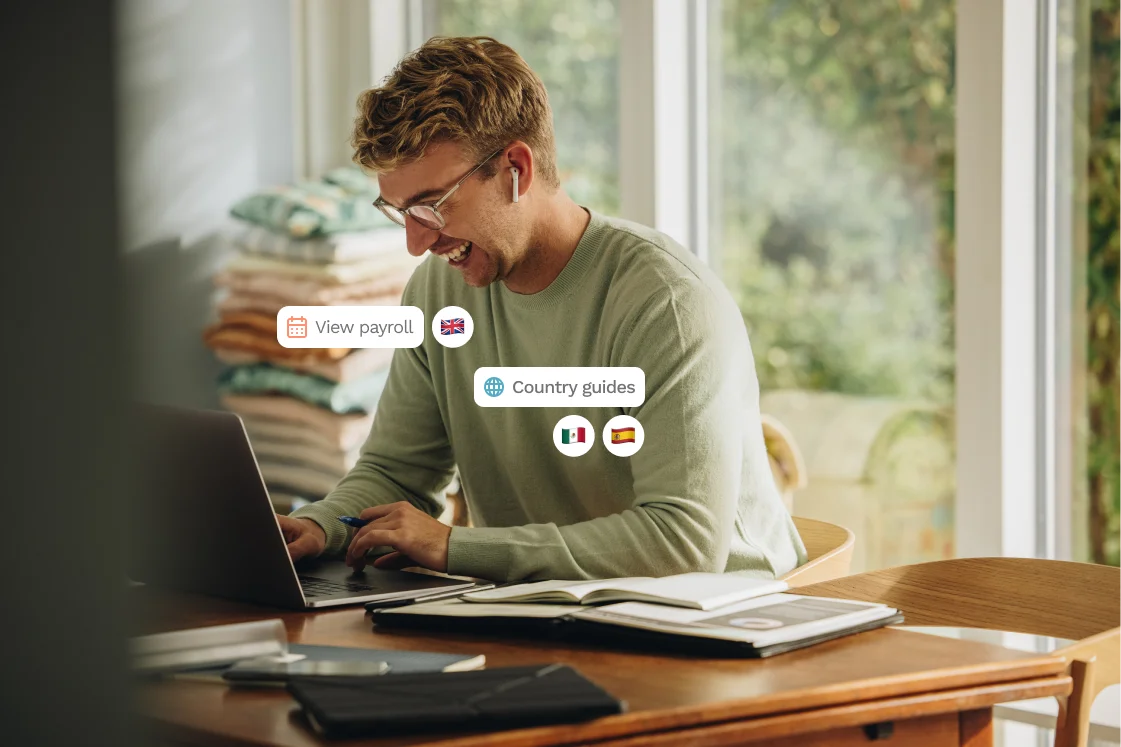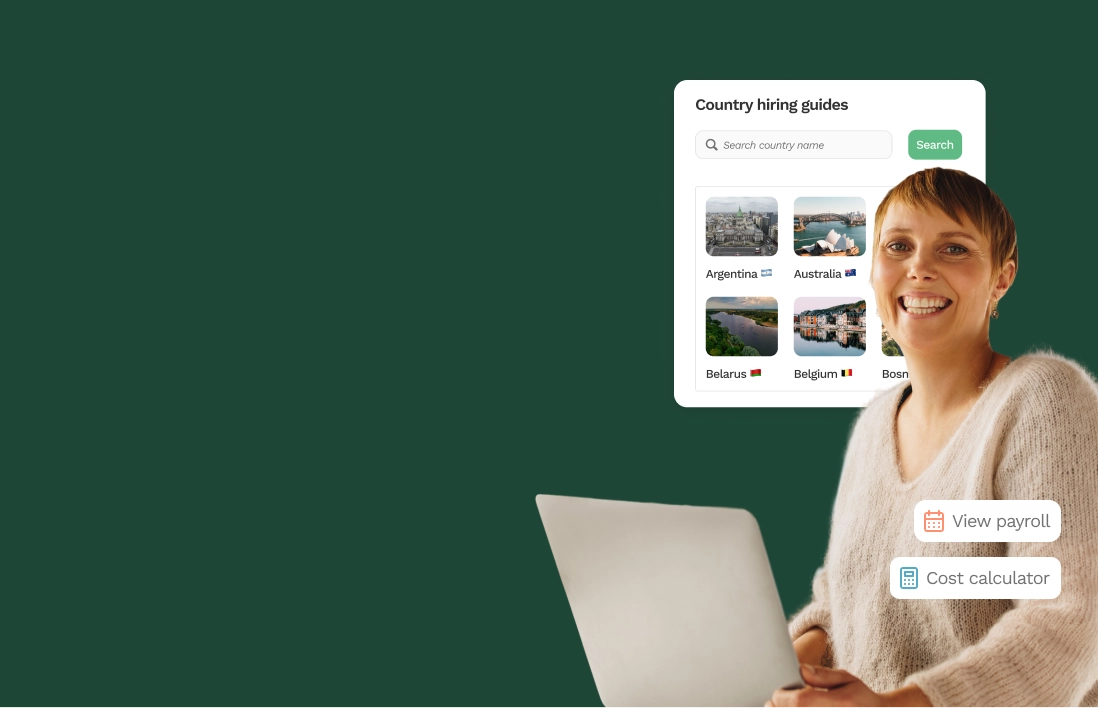How do you promote culture and build community when your remote team spans the globe, and most people have never met in person? How do you keep everyone aligned around the company’s vision and mission, and ensure that everyone knows that their work has an impact?
It’s precisely to address these needs that our whole organization came together at Follow the Sun, Oyster’s end-of-year company gathering focused on connection, community, and learning, that took place from December 4–8, 2023.
Follow the Sun: Oyster’s annual company gathering
“Follow the Sun is Oyster’s annual company gathering,” says Kris Martinez, Director of Internal Community at Oyster. “It’s a week-long virtual event that’s designed to foster connection and community across our remote, globally distributed organization of 550+ people working from 60+ countries around the world.” The event brings together remote colleagues who don’t get to bump into each other in the hallway or go out together after work, and creates an intentional space for learning and socialization.
The name Follow the Sun (FTS) comes from how we work at Oyster as a distributed company. We lean into asynchronous communication and collaboration as each person “follows the sun” in that they begin and end their workday as the sun rises and sets in their part of the world. This operating rhythm lends its name to our annual internal event that celebrates the work we do as a global community.
What happens during Follow the Sun?
The programming includes several types of events and experiences, ranging from a synchronous event where Oysters get to hear directly from company leaders, to more intimate and interactive Zoom webinars for peer learning, to special Slack channels to showcase our cultural diversity, post selfies from the FTS photo booth, and even play arcade games with colleagues. The week wrapped up with the Sunsational Awards (a pun on Follow the Sun), recognizing Oysters who embody the company’s values.
What are the benefits of Follow the Sun?
“For a fully remote organization like Oyster,” explains Kris, “Follow the Sun provides an opportunity for connection, alignment, and recognition.”
First, it enables people to connect with each other, with the work that’s happening across the company, and with our mission and vision. Second, it ensures that everyone is aligned around our purpose and direction as a company, so that each person knows how their work contributes to Oyster’s vision and impact. Last but not least, Follow the Sun is an opportunity to champion and celebrate the innovative work being done throughout the organization, and to formally recognize colleagues who lead with Oyster’s core values of elevating talent, building trust, and thriving together.

Taking stock and looking ahead
The keynote event is the C-Suite Fireside Chat, where members of the senior leadership team reflect on the past year’s milestones, challenges, learnings, and opportunities. While the monthly All Hands is where company leaders regularly share in-depth updates about the business, the fireside chat was a chance to go beyond the numbers and share candidly about how they felt about the past year, where things are now, and what they’re looking forward to in the year ahead. They also shared what remote work means to them personally, whether it’s the ability to choose where to live or spend more time with their children.
The fireside chat was an opportunity for people across the company to hear directly from the leadership team about the state of the business and realign around our shared mission as we enter Oyster’s fourth year. To make the event as accessible as possible, there were three live, synchronous viewings held at different times to accommodate Oysters in the Americas, EMEA, and the Asia-Pacific.
Learning from our colleagues
A new event format that Kris and the Internal Community team introduced this year was called Beam Breaks (another Follow the Sun pun), which are opportunities for learning from our peers. As a global organization, the Oyster community represents an incredible diversity of talent and expertise, so the Beam Breaks were a way to “tap into the rich diversity of thought, experiences, and passions within the Reef,” says Kris.
Anyone could volunteer to lead a 15- to 30-minute session on a topic of their choice, enabling people to share knowledge and insights on whatever they’re passionate about. Some Beam Breaks were work-related (showcasing a new product feature or the work of a particular team), while others were about personal development (such as how to solve any problem or how to create focus time) or focused on community and mentoring (such as navigating remote work as a mother or career lessons from women mentors and role models).
The Beam Breaks were opportunities for social learning, creating a space for people to connect meaningfully on a range of topics, and the response was overwhelmingly positive. To make these sessions accessible across time zones, each Beam Break was offered twice (at different times) and recorded for anyone who wants to watch later.
A focus on culture and community
In addition to creating space for social learning, Follow the Sun also promotes and facilitates social connection—something that needs to be done intentionally in a distributed organization. For instance, there was an “open house” Notion page where each department posted a brief video introducing themselves. Meanwhile, on Slack there was a Follow the Sun photo booth where people could take selfies and add fun filters and frames.

Undoubtedly the most informative and engaging FTS social activity was the #fts-time-zone-takeover Slack channel which served as a venue to celebrate the geographical and cultural diversity at Oyster. “You can think of it as our very own parade of nations,” says Kris. Over the course of three days, people from various countries took over the channel for an hour to showcase their culture and heritage—in the form of photos, playlists, recipes, fun facts, walking tours, and more. From South African recipes and Hungarian dessert recommendations to Canadian slang, island traditions in Greece, Latin grooves from the Dominican Republic, and travel tips for the Paris Olympics, the Time Zone Takeover channel was colorful, soulful, and festive—a tribute to Oyster’s global diversity.
Tips for organizing community gatherings for distributed teams
For remote and distributed organizations, it’s vital to intentionally foster community and connection, since you can’t count on organic interactions in the office. A virtual company gathering like Follow the Sun is a great way to bring people together, align on shared goals and values, celebrate wins, and keep people engaged. So if you’re wondering how to plan an event like this (but tailored to your company culture), here are some tips to get started.
1. Start by listening
A community gathering requires community support, so you need to find out what people care about. “Start by listening,” advises Kris. For instance, at Oyster, it turned out that people were passionate about the company’s mission and impact, and about the future of work. So, the Internal Community team (which sits within the People function) created programming around those themes. They also heard people say they want to connect with colleagues across the organization, so facilitating connections between departments and functions became another guiding principle.
2. Don’t let budget be a barrier
A week-long, company-wide event might seem expensive to pull off, especially if you’re a small company on a tight budget. But Kris clarifies that it’s possible to organize a meaningful event on a minimal budget. “By making it a crowdsourced initiative and not contracting formal entertainment,” Kris explains, “Follow the Sun cost us less than $10 per person to produce, so budget shouldn’t be a barrier.” In other words, no matter what your budget is, you can work with your community to put together a memorable and impactful event.
3. Make it as accessible as possible
In a distributed organization, try to design events in a way that enables everyone to participate. This might mean including a mix of modes and formats to accommodate people in different time zones. For instance, synchronous events might be held more than once, at different times, with a recording made available for those who couldn’t make it. You might also lean into asynchronous ways of bringing people together, such as through Slack channels and async activities, as with our Time Zone Takeover and FTS photo booth.
In addition to time zone accessibility, make it easy for people to engage by providing information in multiple formats and keeping the instructions clear and simple. For instance, we had a Slack channel for FTS updates with only the most important information about how to participate in each day’s events. But since Slack can get overwhelming, all the key information about Follow the Sun (the event calendar, how to register, how to participate, etc.) was also provided as a static page on Notion. Presenting information in multiple channels and formats is a way to maximize inclusion and accessibility.
Thriving together in the new world of work
Creating a community gathering takes effort, creativity, and intentional design, but it’s an important part of thriving as a distributed organization. For more advice and best practices, check out our curated resources on fostering engagement and culture in a remote-first workplace. Or if you’d like to learn more about Oyster’s own journey building and managing a globally distributed team, check out our Building in Public series.












